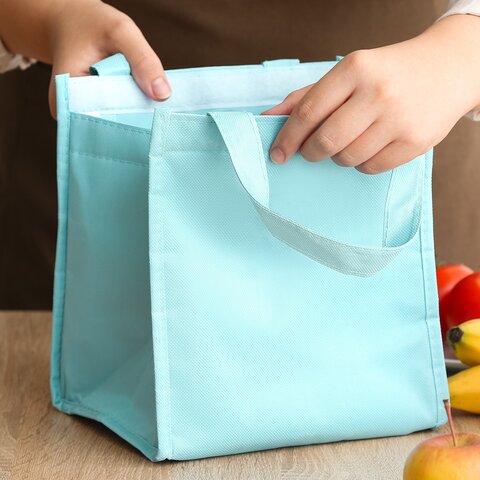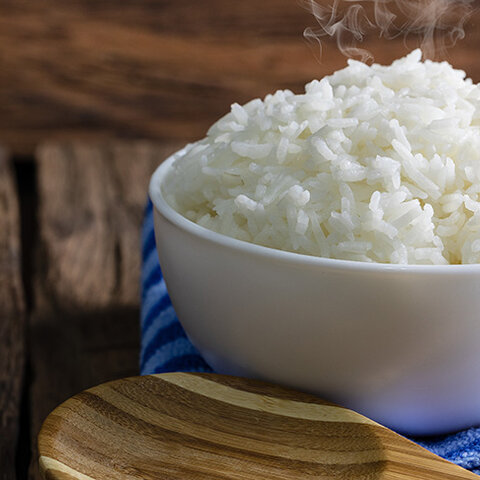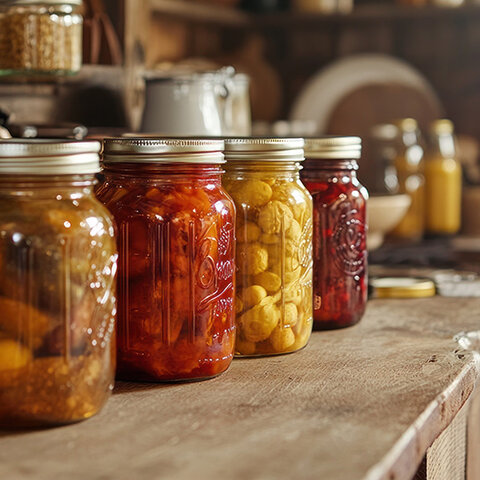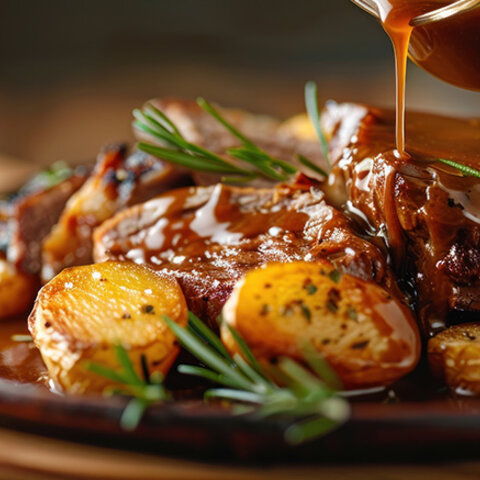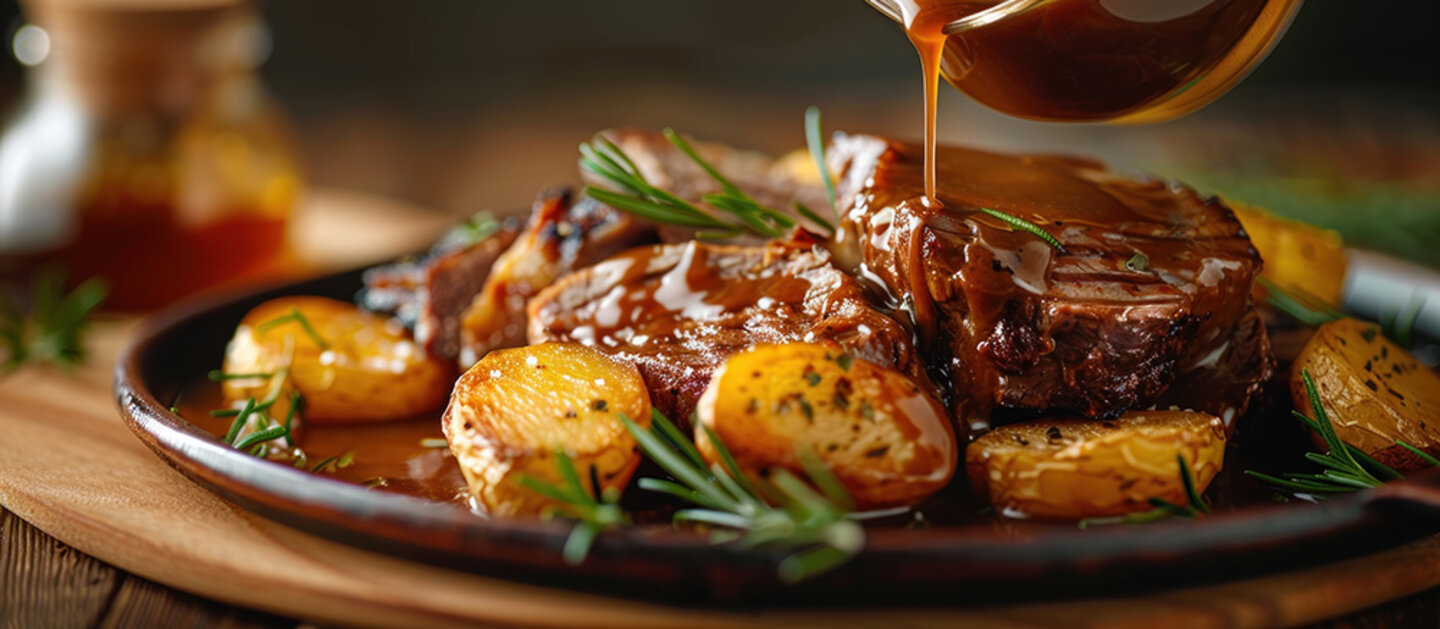
Clostridium perfringens are anaerobic bacteria that can produce spores. The bacteria can exist as a vegetative cell or in the dormant spore form in food. Thorough cooking (140°F) will kill the vegetative cells, but spores may survive. At temperatures between 70°F and 120°F, the spores can germinate into vegetative cells and produce a toxin. Germination of the spores and outgrowth into vegetative cells occurs in food inadequately refrigerated. Toxin production normally occurs in the intestinal tract.
Sources of the organism:
- Intestinal tracts of animals and humans
- Soil
- Sewage
- Any raw food may contain the spore or bacteria
Associated foods:
- Poultry such as turkey and chicken
- Meat such as beef and pork
- Gravy
Microorganism characteristics: Gram positive spore forming anaerobic rod shaped bacteria that can produce an enterotoxin which is released in the intestine.
The Disease: Clostridium perfringens food poisoning causes gastroenteritis from consuming the vegetative cells. A toxin can be produced by the bacteria in the intestinal tract which can also cause a food borne illness.
Symptoms include:
- Abdominal cramps
- Watery diarrhea
- Nausea
Onset time:
- 6-24 hours
Infective Dose:
- Symptoms are caused by ingestion of large numbers ( > 106) vegetative cells or >106 spores/g of food.
Duration of symptoms:
- 24-48 hours
Control:
- Cook foods to their safe internal temperature.
- Reheat foods to 165°F for 15 seconds.
- Refrigerate foods at 41°F or below. Foods must reach 41°F within 4 hours.
- Proper cooling techniques are necessary to prevent spore germination.
Sources:
About C. perfringens Food Poisoning, Centers for Disease Control and Prevention (CDC)
Bad Bug Book, Foodborne Pathogenic Microorganisms and Natural Toxins. Second Edition., Food and Drug Administration (FDA)
This article has been peer-reviewed. It was updated in 2024.
Tags:
